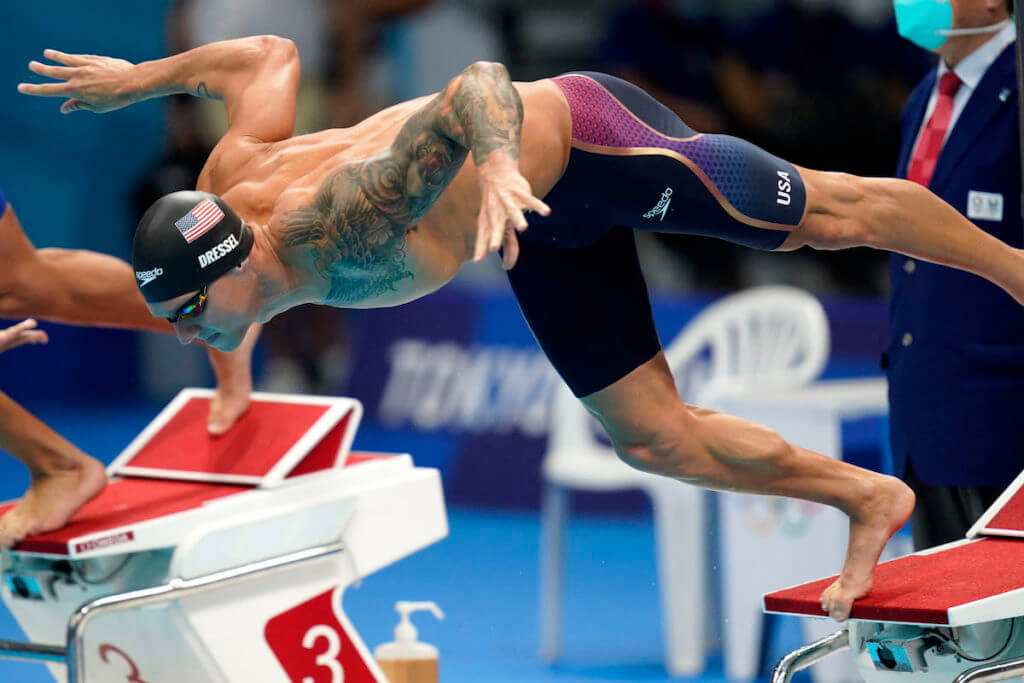What Does It Take To Have a Good Start?

What Does It Take To Have a Good Start?
The Tokyo 2020 Olympics and the ISL matches have evidenced the importance of starting any event with an effective start.
Nowadays, most coaches encourage their swimmers to pay attention to the little details that can help them drop their times, qualify for a National or Olympic team, or win a specific event. One of these little details includes having a good start that will lead to a good race. In fact, according to Elaine Tor, a Ph.D. candidate in Swimming Biomechanics at Victoria University, and the Australian Institute of Sport: “The start can contribute anywhere between 0.8-26.1% of the total race time, depending on the race distance.”
A good start encompasses the following phases: the position that the swimmer holds on the block; reaction time; flight; and the underwater.
On The Block
The position that swimmers adopt on the block determines the amount of power that they will generate. Swimmers should position their feet as wide as their shoulders, with the forward foot placed at the edge of the block with the toes wrapping over it. Whenever using blocks with a wedge, the back foot should be up close to the top of the wedge. The distance between the feet should be between 30 to 40 centimeters. When “take your mark” is called, swimmers must bend both legs, flex their arms, and loosen the neck. Adopting this position will allow more efficiency and a quicker reaction time that can save up to two tenths of a second. The average reaction time is 0.70 seconds.
The Flight
The leap into the water, also known as the flight, is the most challenging part of having a good start. Swimmers should focus on driving off the blocks with the back foot to get into a hyper-streamlined body position. Ten-time world-record holder and three-time Olympian Gary Hall Sr., states that this position: “results in the lowest possible drag coefficient.” Considering this, to achieve a strong streamline, swimmers must tuck their chins to the chest, place the arms behind the head, and wrap their hands together by placing wrist over wrist, with the fingers squeezed together and pointed forward.
Commonly, swimmers forget about the importance of their legs and feet during this phase. Since these body parts enter at the same speed as the hands, swimmers need to point their toes backward and slightly bend their knees. Equally important, to create more momentum, swimmers should slightly flex their hip right before the entry. Additionally, according to Hall’s studies, swimmers must avoid overbending the knees or over-flexing the hips because it can mean an increase of 41% to the swimmer’s frontal drag.
Underwater
The underwater phase starts from the moment the swimmer enters the water until the breakout. Immersion into the water begins with the hands not breaking the hyper-streamline position. It is important to fully tense the torso, stomach, legs and arms the whole time. In this phase, swimmers are targeting a straight and continuous line that will help them reduce their splash and facilitate the entrance of the whole body at a single point. These factors contribute to reducing the amount of drag. In addition, the depth for each swimmer has a direct impact on their underwater efficiency. According to Tor, swimmers should target a depth of 0.5 meters below the surface. Finally, to take advantage of their momentum, swimmers should glide for a short and precise period before starting to kick. The length depends on each swimmer and the event.
Conclusion
A good start does not mean rapidly entering the water to start swimming. It requiress reaching the highest velocity for the longest time after entering the water, and paying attention to the fine details of each element.
All commentaries are the opinion of the author and do not necessarily reflect the views of Swimming World Magazine nor its staff.




A beautiful read on the masterpiece of the advantage of a good start !